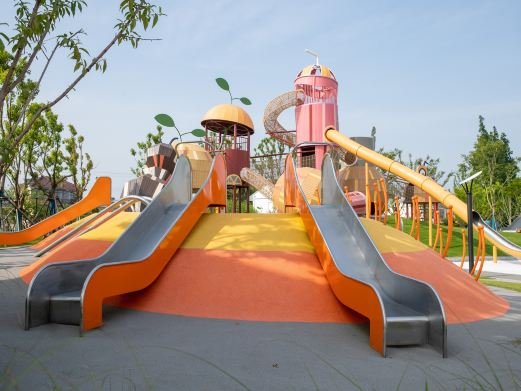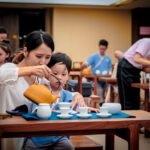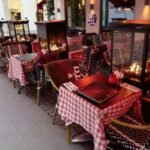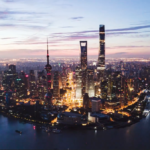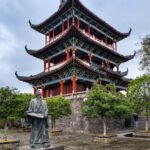Shangxia Xiaoqi is located in the middle section of the eastern route of Wuyuan, consisting of two villages, Xiaxiaoqi and Shangxiaoqi, connected by a 500-meter ancient path. You can visit the Bairentang in Xiaxiaoqi and the Jinshi Di in Shangxiaoqi. The ‘Xiaoqi Divine Camphor’ behind Xiaxiaoqi village is also very famous, so large that two people cannot encircle it with their arms. The tourist route starts with Xiaxiaoqi, which is closer to the road, and then proceeds to Shangxiaoqi, which is deeper in. Xiaxiaoqi has two entrances corresponding to two main roads; one passes through the village mainly to view the architecture, and the other is behind the village to see the camphor trees. These two roads converge within the village, so it does not matter which entrance you choose; the village is not large, and by walking around, you can basically see all the scenic spots. There is an archway near the road in Xiaxiaoqi with the inscription ‘Xiaoqi Village’, where you can take a photo to commemorate your visit. If you miss it when entering the village, you can find it again when you leave after touring both villages.
Xiaxiaoqi is known for the residences of its merchants. For instance, the brick, wood, and stone carvings at Ligengtang, which you will see first upon entering the village, and the adjacent Jixutang, are the residences of two wealthy brothers. Next, visit the ancient house, Bairentang, which has a history of over 600 years. ‘Shuangjing Yin Yue’ is also a famous spot in Xiaxiaoqi; the two wells are said to have been built during the Tang Dynasty, and on moonlit nights, they reflect two bright moons. Both Shangxia Xiaoqi are surrounded by ancient camphor trees, which are a major attraction. On the road behind Xiaxiaoqi village, you can appreciate the thousand-year-old camphors. Among them, the ‘Xiaoqi Divine Camphor’ is over 1500 years old and is considered the ‘King of Camphor Trees’ in the area; it is said that walking around the tree three times can bring good luck.
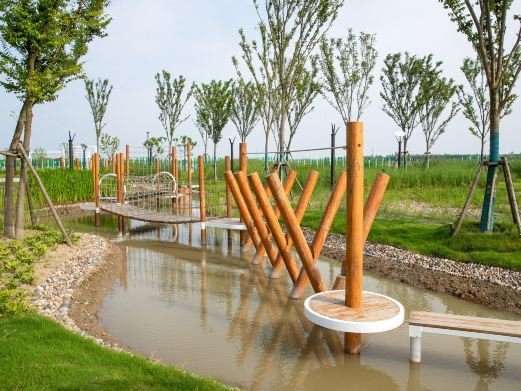
After touring Xiaxiaoqi, follow the 500-meter bluestone ancient path between the two villages to Shangxiaoqi. Along the path, there are vast rapeseed fields, and in March and April when the flowers bloom, this is one of the photo spots in Shangxia Xiaoqi. Shangxiaoqi is quieter than Xiaxiaoqi, with architecture mainly consisting of Ming and Qing dynasty official residences. Jinshi Di, Ronglu Di, and Dafu Di are the main ancient buildings to visit in Shangxiaoqi. Although these three Hui-style buildings with white walls and black tiles show signs of age, their exquisite brick, wood, and stone carvings still reveal the grandeur of their time. The majority of Shangxiaoqi’s residents have the surname ‘Jiang’.
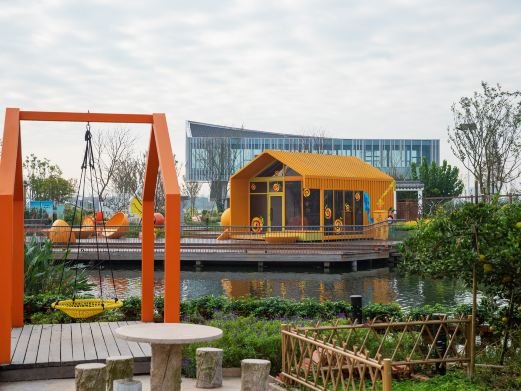
As for local specialties, Shangxia Xiaoqi produces green tea. You can see the water-powered tea-making workshops at the entrance of Shangxiaoqi village and purchase green tea there. Of course, in addition to this spot, there are tea shops throughout the village, and small teahouses where you can enjoy a cup of tea, some even set up directly under the large camphor trees. Sitting quietly to enjoy a cup of tea while watching the water flow in front of you is also a pleasant experience.
For shopping, in addition to Wuyuan green tea, camphor wood is also a specialty sold everywhere in Shangxia Xiaoqi. There are combs and handicrafts made of camphor wood, and there are also wood directly cut into slices and blocks for sale.
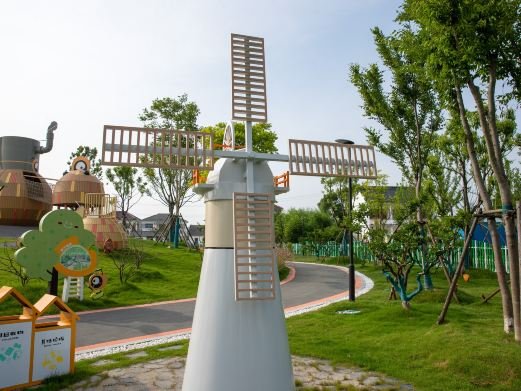
Accommodation and food recommendation: If you want to eat delicious food, basically any restaurant in Shangxia Xiaoqi has the specialties of Wuyuan. The famous one is the purse carp. The mashed tofu is also unique. Jiangxi people like spicy food. If you are not used to it, you need to tell the boss in advance not to add spicy.
